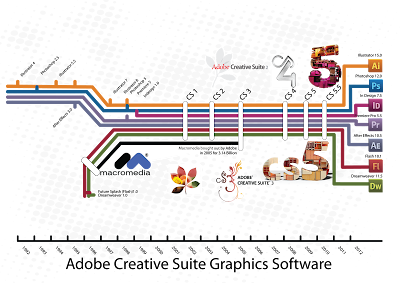Friday 3 June 2011
Environs Project. Postcards.
environs project.
The results of this project were rushed, compiled with a lacklustre group submission that in the end just came across a feeling a little dull. Although maybe not a complete train wreck, I learned a few things from this project. Time management skills are crucial to producing a high standard of work and communicating well in teams really helps to achieve better results. I spent some time there and tried to get the feeling of the place and the impression I got I tried to carry into the work by giving the hard edged kind gritty feeling of black and white photography mixed with the burgeoning new brand of the place due to its new purpose of being a series of artistic performance spaces. I also got a bit of technical practice in with the usual suspects of Illustrator, Photoshop and an interesting online tool called Wordle to that generates a word cloud with font size that varies in response to how regularly a word appears in a body of text amongst several other controls. moving on!
Thursday 2 June 2011
The Atomic!
The "Atomic" Stove top Coffee Maker.
Although it is a small domestic item of kitchenware, the ‘Atomic’ stove top coffee maker has nevertheless come to signify the quintessence of postwar Italian design and of the Organic Design movement that emerged from the end of World War Two. The 'atomic' has attained iconic status. It has survived disputes concerning distribution and intellectual property rights [1] and advances in coffee making technology to remain an enduring contribution to design in the modern era.
Truly an icon, the ‘Atomic’ stove top coffee maker is the embodiment of the Atomic Age and post-war Italian Design. In its halcyon days, this was truly an era of unrivalled expression of natural forms and self expression by industrial designers - the very era that spawned such iconic Italian designs as the Vespa and Lambretta motor scooters, the Arco lamp by Achille Castiglioni and the Fiat 500.[2]
Patents registered in the United Kingdom and United States of America [3] indicate the ‘Atomic’ stove top coffee maker to have been designed and manufactured by Giordano Robbiati in Milan, Italy from the late 1940’s through to the 1990’s. For its time, the ‘Atomic’ was constructed
primarily of the modern material of aluminium alloy. Italy, Having considerable Bauxite reserves, [4] the primary mineral concerned in the manufacture of aluminium and being one of the countries to pioneer the global use of nuclear energy [5], the abundant energy that is required for the smelting and production of Aluminium was afforded by nuclear power took advantage and created a thriving industry based around this lightweight metal. As discussed in Schnapp’s 2001 essay regarding the romance of aluminium and caffeine, the Italian designers of the day were issued a call to consider the use of Aluminium in new products [6]. The machine has come to symbolise the Atomic Age, a period of design during the 20th Century, born of war, bloodshed and calamitous social experimentation. Shaped by massive exponential advances in science, technology and mass-production, Modern Art and Design during this time appears to have made a significant shift towards more sensuous, naturally occurring form. “Just as hard edged, machine-like imagery had characterised the Inter-war (WW1-WW2)period, softer forms and undulating lines with organic or biological sources defined the most innovative and “modern” art forms of the post war period” [7]. This, perhaps, is a natural response to the omnipresent fear of mutually assured destruction through nuclear holocaust felt by society at that time in history, as a way of feeling comforted and being transported, emotionally at least, to more innocent times.
The Atomic is a design feat that has crafted an object which is at once modern and organic. The design of the ‘Atomic’ is pure modernity with its materials of the industrial machine age, shiny, hard and smooth. It appears to be fashioned from a block of aluminium along with the artful use of bakelite to make touching and using this device a tactile sensation. This is not just technological ingenuity but a singular piece of industrial sculpture. It evokes the sinuous flowing lines of Italian marble. It also happens to make coffee, the preferred drink of trendy, socially mobile, ambitious middle classes. Being ergonomic, sculptural and state-of-the-art, the ‘Atomic’ embodies the traditions of Organic Design proponents such as Ettore Sottsass, Ray and Charles Eames and Jorn Utzon [8].
In the kitchens of the trend makers, it was the piece de mileau. Elegant, compact, practical, an object of desire adorning the pages of high end interior fashion magazines and advertising for nearly half a century, the ‘Atomic’ has been synonymous with style and good design sensibilities. No less than a score of iterations and several disputes regarding distribution rights exist surrounding this perky little coffee pot. This despite the fact that the atomic has not been universally regarded for its fine coffee [9].
Post-war industrial designers were looking for ways to bring modern convenience to the home. Although domestic coffee appliances were available at the time, the ‘Atomic’ was able to bring cafe-style coffee to the home, with design sophistication. The elegant single-piece curved design solves several design problems in one: water is heated for percolation and to create steam for milk texturing, whilst also keeping the brewed coffee warm, and facilitates easier cleaning compared with the more common percolator design. The real advance was not that the ‘Atomic’ was a superior method, but that it offered a previously unavailable combination of design features - the trifecta of percolation, steam wand, and good looks in the one device. If not for this combination of design features, the ‘Atomic’ may have languished, regarded as just another percolator.
It is a tribute to the beautiful design that despite these clever features, the ‘Atomic’ is purported to make (by today’s standards) a mediocre cup of coffee [9]. A recent homage to the original design by Otto Espresso Australia, has refined the internal design by incorporating superior pressure at the group-head and reduced heat exposure to the brewed coffee[10]. This redesign along with ongoing original reproductions, validates that there are relatively few modern domestic coffee machines that are so sculpturaly beautiful, uncomplicated and robust.
In summary, the ‘Atomic’ epitomises post-war Italian design and the Organic Design movement with its elegant compound curved shape and sleek appearance. It is a tribute to its sophisticated combination of design features that it is still in production today.
[1] Trade Marks Act (1995) Decision of a Delegate of the Registrar of Trade Marks With Reasons - Re: Opposition by Irene Notaras to registration of trade mark application 1222669(21) - LA SORRENTINA ATOMIC COFFEE MACHINE - filed in the name of Jack Grieve.
http://www.ipaustralia.gov.au/pdfs/trademarks/hearings/1222669_decision.pdf
[Accessed 11.10am 02-05-2011]
[2]Atomic Style and Distinction - 30-06-2008.
http://www.bestcafes.com.au/tag/atomic-coffee-maker
[Accessed 9.36pm 30-04-2011]
[3]Google Patents (1947) Design for a Coffee Maker or Similar Article - Giordano Robbiati et al
http://www.google.com/patents/about?id=Sq1wAAAAEBAJ&dq=giordano+robbiati
[Accessed 11.27am 02-05-2011]
[4] Collier, James E. 1946 Economic Geography-The Aluminium Industry of Europe
Vol. 22, No. 2 (Apr.1946) Clark University, Boston.
[5]International Atomic Energy Association 2006 2.1. Historical Development and current nuclear power organizational structure
http://www-pub.iaea.org/MTCD/publications/PDF/cnpp2009/countryprofiles/Italy/Italy2006.htm
[Accessed 10.15pm 30-04-2011]
[6] Schnapp, Jeffrey T 2001, ‘The Romance of Caffeine and Aluminum’, Critical Inquiry, Vol. 28, No. 1, Autumn, pp. 244-269
[7] Rapaport, Brooke K & Stayton, Kevin L 2001, Vital forms- American Art and Design in the Atomic Age 1940-1960, Harry N Abrams Inc, New York
[8] http://www.atomic.org.nz/design.html
[Accessed 10.55pm 30-04-2011]
[9] http://coffeesnobs.com.au/YaBB.pl?num=1274336931/26
[Acessed 12.52am 03-05-2011]
[10]Holroyd, Jane, January 26, 2010 Brewing up a business idea
http://www.smh.com.au/small-business/startup/brewing-up-a-business-idea-20100126-mvc1.
[Accessed 1.59am 03-05-2011]
Subscribe to:
Posts (Atom)








